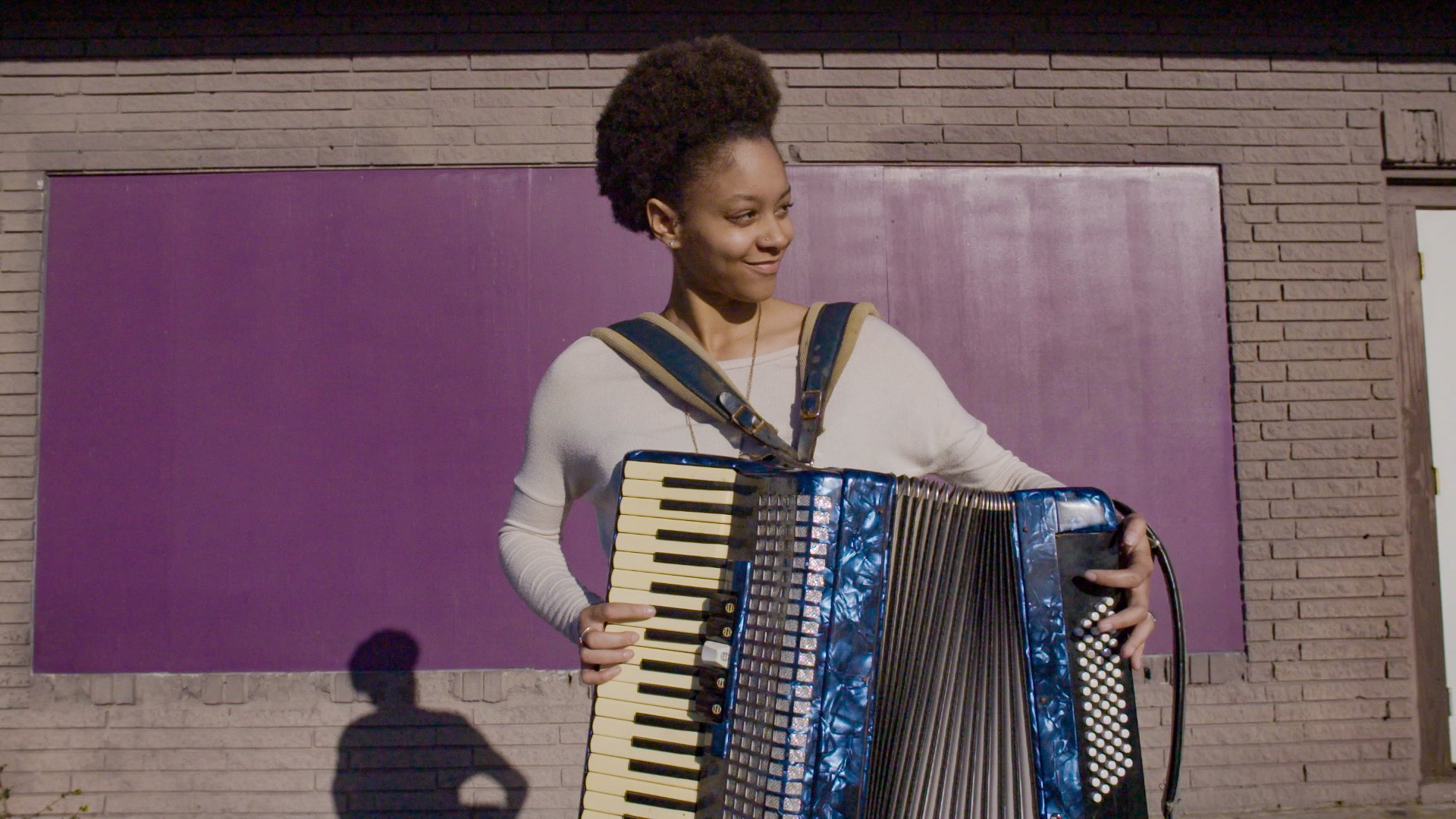This post originally published on KQED, San Francisco’s NPR and PBS affiliate. See more of KQED Arts’ award-winning video series If Cities Could Dance here.
KQED filmed this episode in February, before the coronavirus pandemic swept through the United States. Houston is currently experiencing a surge in COVID-19 cases and we hope the community remains safe at home until it’s time to dance together again.
Download English Transcript.
Download Content Description.
You see it in the images from Beyoncé’s “Formation,” the lyrics of Lil Nas X’s “Old Town Road,” and in the streets at Black Lives Matter protests. It’s the deep connection between Black culture and country life, and it’s long thrived in the Creole community of Houston, Texas, courtesy of zydeco music and dance.
The Houston scene traces its roots back to southwest Louisiana, where a music style called “French music” or “la la” was performed at house parties, a union of accordion, fiddle, and triangle. (Les Blank famously captured Louisiana Creole culture in his 1973 documentary Dry Wood.) Over the first half of the 20th century, Creole people from the region moved in waves to Houston, bringing their music with them. Facing racial segregation, they founded a neighborhood known as Frenchtown in Houston’s Fifth Ward.
Both economic prospect and natural disaster shaped these migrations, notably the Mississippi River Flood of 1927. But la la persisted despite geographic dislocation, settling comfortably into Frenchtown’s living rooms, porches, church bazaars and dance halls. It was musician Clifton Chenier (himself a transplant from Louisiana to Texas) who’s credited with blending the sounds of southwest Louisiana with the popular, emerging sounds of R&B, creating the modern, extremely danceable style of zydeco.
“Zydeco is rock and French mixed together, you know, like French music and rock with a beat to it,” Chenier once explained. Chenier added a washboard vest, electric guitar and bass, keyboards, a drumkit, and the occasional horn to the traditional la la band, and was first recorded in Houston by the Bay Area’s Chris Strachwitz of Arhoolie Records. The word “zydeco” comes from the folk expression les haricots (ne) sont pas salés, or “the beans are not salted” (because times are hard).
The dance is deceptively simple: one partner leads and the other follows. Balancing out lively syncopated music, zydeco looks like a series of small sidewise steps, the dancers’ upper bodies held steady with little hip swinging, wiggling or jumping. It’s the second and sixth beats—that’s when there’s the opportunity for flair: kicks, toe or heel taps of the cowboy boot, a bent knee, a graceful spin.
Today, the zydeco scene in Houston is filled with dancers of all ages; newcomers dance alongside the descendants of legendary musicians and performers. Karina Houston describes the draw of zydeco: “I need that. I need that moment of feeling free, letting my hair down, being around friends and family.”
For some, it’s a family tradition they never stopped upholding. Joseph Norman has been dancing zydeco since he was a child, shortly after his family joined the wave of migration from southwest Louisiana in their move from Opelousas to Houston. Norman remembers his grandfather emptying the house of people and belongings just to bring a band in. Similarly, Alexis Jolivette’s family history is steeped in zydeco. Her grandfather was the famous zydeco musician Wilfred Chevis and her parents met at a zydeco event.

In Houston, zydeco is inescapable. Even Cedric “One-Step” Jones and his dance partner Stacie Dancy, who both drifted away from the zydeco gatherings of their youth, are now regulars in the scene. “My grandmother has always told me, ‘Boy, that music is embedded in you, that’s your blood,’” Jones says. Like them, more and more Houston residents are finding community in gathering to dance.
For many of these dancers, musical gatherings are just one aspect of a lifestyle rooted in their Creole heritage: trail riding by day, zydeco dancing by night. As images of Black horseback riders in recent protests prove, the act of trail riding, comfortable and celebratory to so many in Houston, can be a potent symbol of Black joy. —Text by Sarah Hotchkiss
Read more from the Observer:
-
From Boom to Bloodbath: A border wall is headed for Laredo—unless opponents can run out the clock.
-
In Houston’s Fifth Ward, the Storm Never Stops: Residents in this historically Black community are especially vulnerable to COVID-19 and woefully unprepared to recover from the next hurricane.
-
Telehealth Could be Great, if Texans Had Access to It: Remote health care has the potential to connect patients to doctors safely during shelter-in-place. So why do so many Texans remain disconnected?







